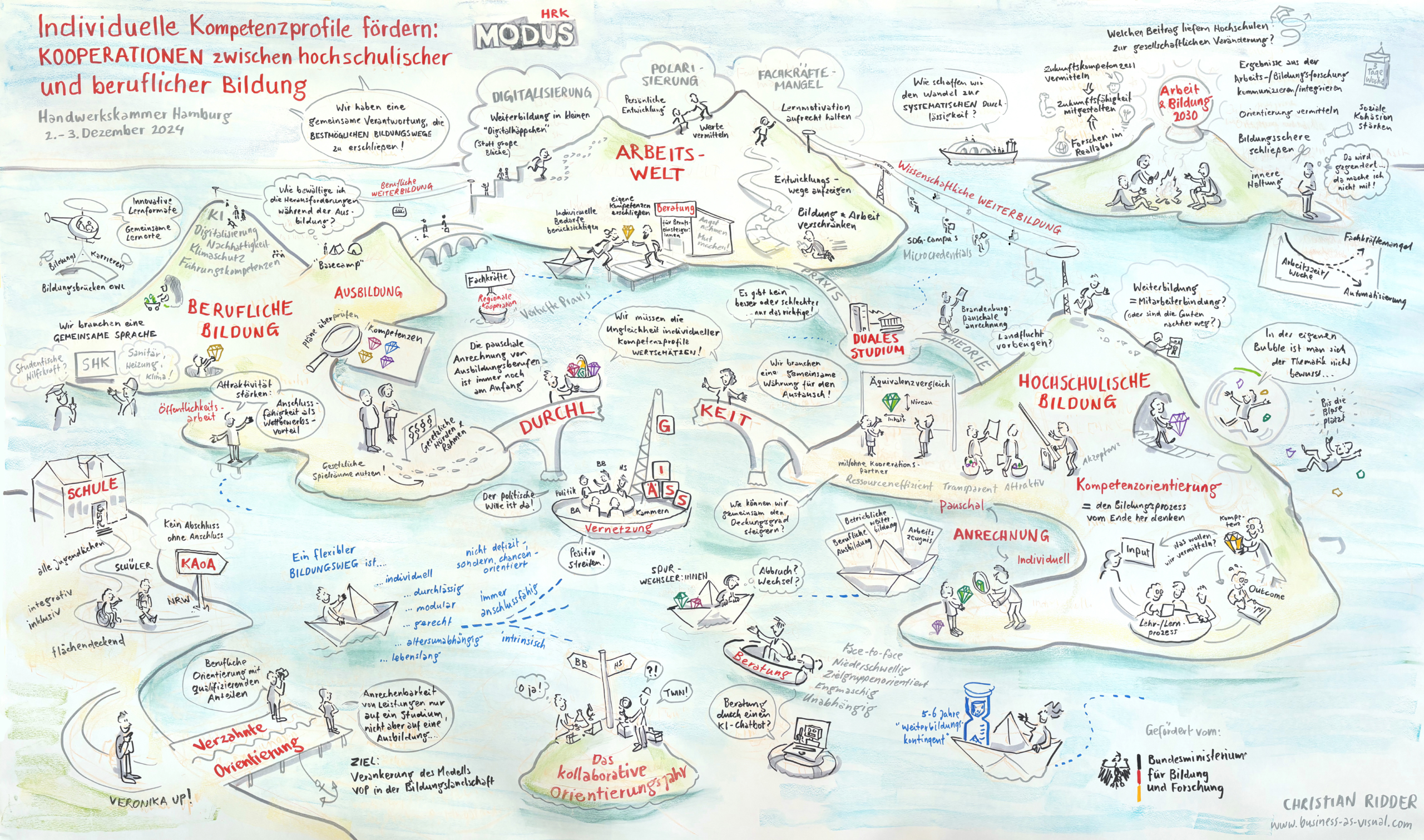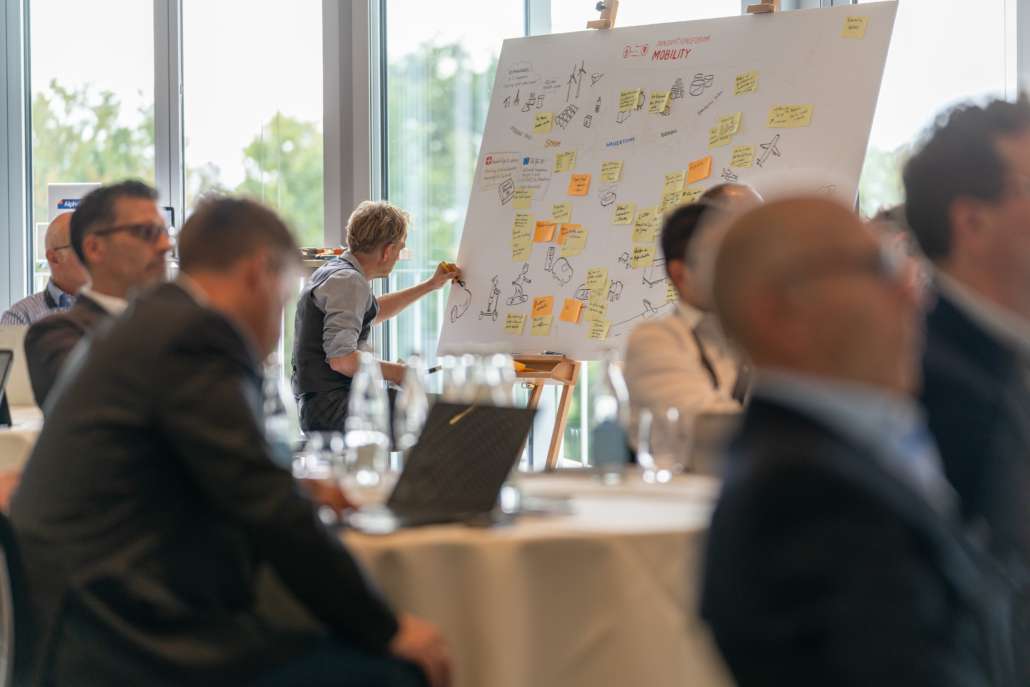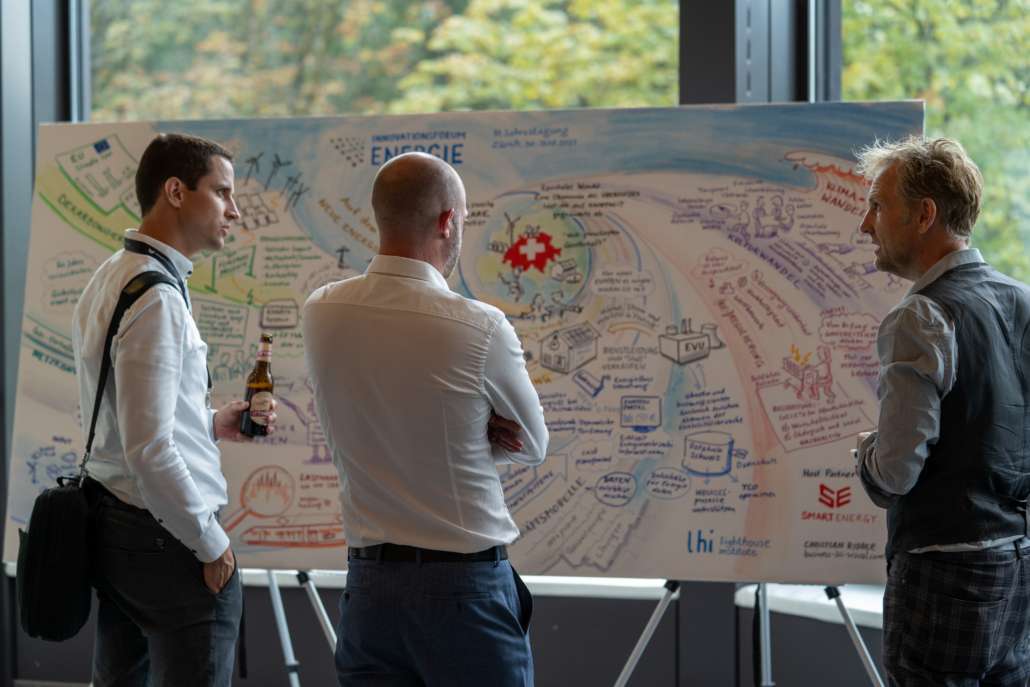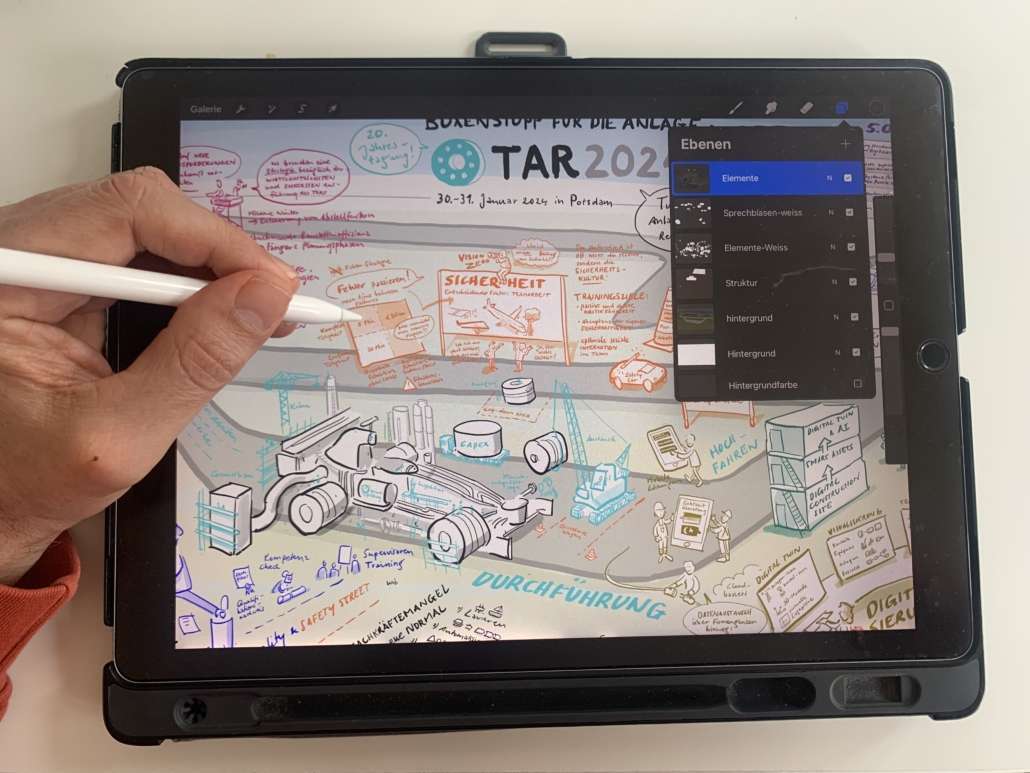info@business-as-visual.com | +49 175 2273106
Graphic Recording







When creating a graphic recording, content – such as from a lecture, workshop, or meeting – is captured live and visually. The Graphic Recorder listens and creates a kind of visual transcript in real time: with sketches, symbols, keywords, and short texts.
Anyone who looks at examples of graphic recordings on the Internet will notice that the images often consist of many individual image and text elements, the content of which is sometimes difficult for outsiders to understand. In my visualizations, I therefore try to classify the content of the conference or meeting in an overall structure. Often the information finds its place in a large metaphorical representation, e.g. on a map or a playing field. The graphic recording unites the different perspectives on the topic in an overall picture and thus forms a bracket around the entire event.
Understanding & Insight: The most important content, core messages and insights of the event captured in a pictorial and easily understandable way.
Excitement & Entertainment: In the age of digitization, it is something special for many when someone creates a large picture only with pens and chalk – without the help of AI, copy-paste or an “undo button”. In the course of the event, an ever-increasing curiosity about the final result grows.
Interaction & Reflection: I ask the participants to stop by during the day and tell me if anything essential is still missing. Ideas often arise during the exchange, which I then integrate into the picture.
Connectedness: The graphic recording changes the “energy in the room”. Speakers and participants know that their words will become part of a shared work of art. “Something new is being created – and I’m part of it!”
Impressive Conclusion: I am always happy when I can present the graphic recording at the end of the event. I often photograph the graphic recording and present the image using a projector. In just a few minutes, I guide participants through the key scenes and topics.
Social Media: The creation of the picture is an exciting, “photogenic” event, which is often shared during the event itself. A circle of curious people often forms to take photos and post them.
A work of art on the wall: The original picture belongs to the client. But it can also be given to a sponsor or raffled off among the participants. The graphic recording often hangs for years in hallways, meeting rooms or offices.
Documentation: I photograph the picture in parts and create a high-resolution digital version in Photoshop. Clients receive full usage rights to use the digital image in a variety of ways. For example:
Explanatory Video: Optionally, I produce a two- to three-minute video immediately after the conference in which I guide viewers through the graphic recording. See also: Explanatory videos
Review as an Introduction: If there is a follow-up event, the image created earlier can be used to look back: What has happened since then? Which topics are still current? Some events develop a true graphic recording “tradition” over the years. Good examples are the “Innovation Forum Energy” and the “E-Invoicing Summit”
Important points are clarified already during commissioning.
During the organizational preparation, the practical setup is planned:
The content briefing usually takes place one to two weeks before the event. Together with any moderators, we clarify how the graphic recording should be integrated thematically.
I usually sketch out a rough image idea in advance and coordinate it. Briefing and sketch help both sides prepare optimally for the event.
First, I collect individual details and quotes on Post-its and stick them where I think they will fit into the image.
Once enough information has been gathered for a topic block, I combine the Post-its into a scene with keywords and thought or speech bubbles. I try to find motifs whose visual language matches the overall concept and choose colors that not only look good but also support understanding.
Over the course of the event, a large, coherent visualization “matures”. At the end, the image gets a special touch through the elaboration and coloring of the background structure.
Yes! On-site, I usually draw analog with markers and chalk on paper, but often also digitally (with ProCreate on the iPad). Each method has its own strengths.
Analog on-site: This format usually makes the biggest impression. Everyone can watch how the large blank paper fills throughout the day. Interaction during breaks is also more direct.
Digital on-site: Digital work allows me to respond even more flexibly to what’s happening, as elements can be moved or edited easily. After the event, the digital image can be used and adapted more easily for different purposes.
Online digital: Online events are often shorter and more focused than in-person ones. That’s why I usually prepare a visual base beforehand, which is then filled live during the event. This gives me a clear structure and supports the moderation as well.
Typical daily rates for graphic recorders range between €1500 and €2500. But the daily rate alone doesn’t tell the whole story. Depending on the provider, there may be costs for:
I usually charge €1800/day for the graphic recording, plus €900 for preparation and follow-up. Travel expenses are billed only for actual travel and hotel costs, not travel time. Material costs only apply if specially ordered materials are used (e.g. large foam boards). All usage rights are included – I want the image to be seen and used as much as possible!
Are you planning a conference, corporate event or workshop and would like to find out more about the benefits and practicalities of graphic recording?
Or would you like to communicate complex issues in a visual and easy-to-understand way and learn more about the joint development of vision, strategy and target images?
If you would like to visualize yourself, you can find out more about training opportunities and my book and card set “Understanding, designing and controlling with images” here
In the download store you will find PowerPoint and workshop templates with metaphorical images.